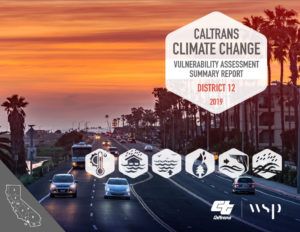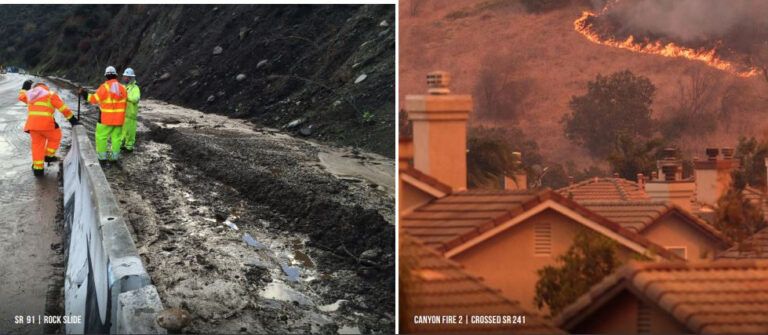As part of an effort to identify the effects that climate change will have on the state’s complex transportation system, the California Department of Transportation (Caltrans) is conducting region-specific climate change vulnerability assessments for each of its 12 districts.
Caltrans has released four new assessments focusing on Central California and Orange County and the risks posed to their assets by wildfires, extreme temperatures, sea-level rise and coastal bluff erosion. These assessments cover 21 counties including those in the Sacramento region, Central California, mountain regions, and Orange County. Interactive maps created by Caltrans help demonstrate the expected impacts of climate change on the state’s transportation system. For each of Caltrans’ 12 districts, the Summary Reports provide a high-level review of potential climate impacts to the district’s portion of the State Highway System, while the associated Technical Reports present detail on the technical processes used to identify these impacts.
Compiled in association with the agency’s consultants, WSP, the new vulnerability assessments will help guide Caltrans toward planning and investment strategies that lessen the impacts of climate change and save taxpayers money. The agency’s work in protecting the state’s massive and complex transportation system requires collaboration with its multiple partners and stakeholders. The department is sharing the reports’ data with local, regional, state and federal agencies. Together, we will work toward establishing a more resilient transportation system that millions of citizens currently rely on. Caltrans has completed all but two of the assessments for the state, and upon completion of all 12 assessments, the agency will develop adaptation reports for each region that outline how climate change resiliency will be fully integrated into future transportation decisions.
“Too many Californians have already experienced the effects of climate change including fires, flooding and mudslides impacting all modes of travel, the erosion of coastal highways, and dead and dying trees falling near roadways,” said Caltrans’ director, Toks Omishakin. “No matter how you move about the state, you rely on some form of transportation to get you where you need to be. We are taking steps now to fully understand the reality we’re facing and ensure the long-term health and vitality of our vast transportation system for current and future generations.”





